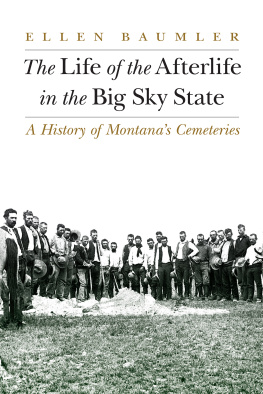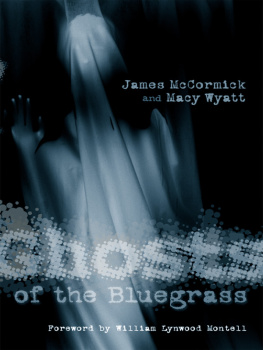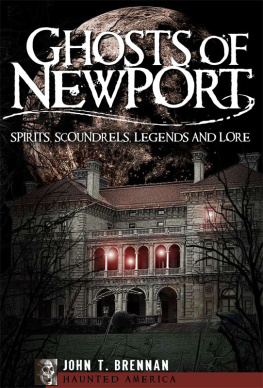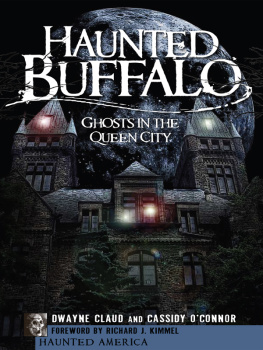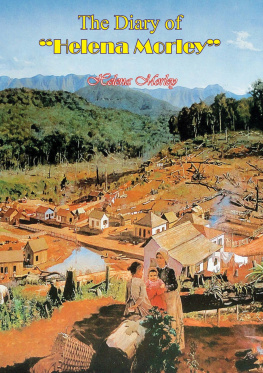Published by Haunted America
A Division of The History Press
Charleston, SC 29403
www.historypress.net
Copyright 2014 by Ellen Baumler
All rights reserved
All cover images courtesy of Chloe Katsilas, Rio de Luz Photography.
First published 2014
e-book edition 2014
ISBN 978.1.62584.949.6
Library of Congress CIP data applied for.
print edition ISBN 978.1.60949.934.1
Notice: The information in this book is true and complete to the best of our knowledge. It is offered without guarantee on the part of the author or The History Press. The author and The History Press disclaim all liability in connection with the use of this book.
All rights reserved. No part of this book may be reproduced or transmitted in any form whatsoever without prior written permission from the publisher except in the case of brief quotations embodied in critical articles and reviews.
ACKNOWLEDGEMENTS
Writing a book is a journey, and there are always U-turns and detours. Haunted Helena has been no exception. Many friends, colleagues and acquaintances have helped me along the way, offered encouragement and contributed to these pages. I appreciate each of them.
I especially thank those who came forward to share their experiences with me and then allowed me to retell them. I hope readers will appreciate that it is not always easy to share incidents and events that are personal. There would be no Haunted Helena without your stories.
Thanks to my daughter, Katie Baumler-Morales, who carefully read every draftmore than onceand offered excellent critiques. Jon Axline and Charleen Spalding also offered careful critiques of some of the chapters.
Chloe Katsilas of Rio de Luz Photography generously donated her time, freely offered her photography skills, lugged her camera around to numerous places and took many of the photos that appear on these pages.
Finally, thanks to my husband, Mark, for his tolerance and patience over many nights and weekends at the computer and for allowing me to tell our familys story.
Introduction
IT BEGINS AT HOME
A heavy spring snowfall spread like a blanket over Helena on Easter Monday 1988. Our tiny cabin at the Lamplighter Motel was warm and cozy. My husband, Mark; our three-year-old daughter, Katie; two cats; and a cocker spaniel had made the long trip from Tucson. We felt like pioneers heading into unknown territory. Montana was to be our new home.
The April snow made tiny streams and rivulets in its rapid melt as we began our frantic search for housing. Mark was soon to start his new job as state archaeologist, the moving van was three days behind us and we were desperate. We looked at everything on the market, but nothing seemed right. Bill Spilker, our congenial realtor, shrugged in frustration.
Isnt there anything else you can show us?
Well, Bill said, there is one more. But I think its too big for three of you. Still, we can take a look.
The two-story, Italianate-style house sat on a busy corner at Eleventh Avenue and Raleigh Street. My heart skipped a beat as we climbed the steps to the front porch. Bill turned the key in the lock. We stepped across the threshold, and we knew that we had come home. The house, built in 1888, had just hit the century mark. It needed work, but it had beautiful high ceilings, a spacious kitchen and great potential. Plus, it was empty and ready (or waiting?) for us. We moved in a couple days later.
That first night, I awakened to radio static. I reached over to turn off my clock radio, but it wasnt on. I got up to search for the sound. I could hear faint threads of music and something like conversation over the static, but the sounds were too low to identify. I went back to bed annoyed and listened to the radio for a long time. I finally drifted back to sleep and forgot about it.
The historic Wick-Seiler Residence has been home to the Baumler family since 1988. Ellen Baumler.
The second night, the same thing happened. I awakened as before to the sound of the radio. Again, through the static I heard music and voices. A search of the upstairs turned up no radio. I said nothing until it happened a third time. I told Mark that something was keeping me awake at night. His expression was odd. Have you heard the radio, too? he asked.
We accepted the radio as an odd quirk, and from time to time, we heard it in the night. It never made us uncomfortable; it was just annoying. Turmoil in the household seemed to bring it on. If one of us was sick, if we had troubles or if the furniture was displaced during our endless renovations, we would likely hear it. Sometimes it visited only one of us; other times, we all heard it at the same time.
Katie chose the bedroom at the top of the stairs, and we settled in. We had not been in the house long when one morning at breakfast she announced that footsteps on the stairs had awakened her. She was not afraid; rather she said matter-of-factly, That was John coming home last night. We had no idea who John was or where Katie came up with the name, but as we began to research the homes past, that piece seemed to fit. John Wick, an early owner, was a prominent saloonkeeper and would have kept late hours. I realize now that children are sometimes more sensitive than adults to residual energy.
Katie never slept well in that room, and night terrors regularly plagued her. When she tried to articulate what was scaring her, she could only identify the window as the source of her dread. We moved her to the other bedroom, and sometime later, a former resident knocked on our door. We invited her in and showed her around. When we got to the room at the top of the stairs, she commented offhand that her daughter was about Katies age and this had been her room. Strange, she said. My daughter never slept well in this room. She was terrified of the window.
We became acquainted with John Wicks grandchildren, Art Seiler Jr. and Bernice Seiler Mitchell. The delightful brother and sister, both well into their eighties when we first met them, grew up in our house and had very fond memories. They visited us several times, sharing family history and childhood adventures. Their grandfather John purchased the house and the cottage next door on Raleigh Street in 1898. He and his wife, Mina, had three children. In 1901, their daughter, Elizabeth, married Arthur Seiler Sr. in a ceremony in our living room bay. It was Elizabeths twentieth birthday.
John and Mina Wick, like their son-in-law, were German immigrants, and the family spoke their native language at home. Seiler became the longtime editor of Helenas German language newspaper. He came to the United States in 1889 at fifteen on the ship Westernland. He spoke no English and traveled alone. When he finally arrived at Helena via the Northern Pacific, he was to work for an uncle. His uncle, however, had disappeared. The German community took Seiler in. He learned English, apprenticed under candy maker Frank Hepperdiezal and learned the trade. Until he died in 1968, Seiler grieved because he thought his uncle had abandoned him. Family members later discovered, however, that prior to Seilers arrival in Helena, the uncle had been traveling along a remote trail on business when he was ambushed and murdered.
John Wick passed away in 1908. Although he helped lay the cornerstone of the German Lutheran Church on nearby Rodney Street, the funeral took place at home as was the custom. After Wicks death, Arthur and Elizabeth moved into the family home with their two small children, newborn Art Jr. and six-year-old Bernice.


